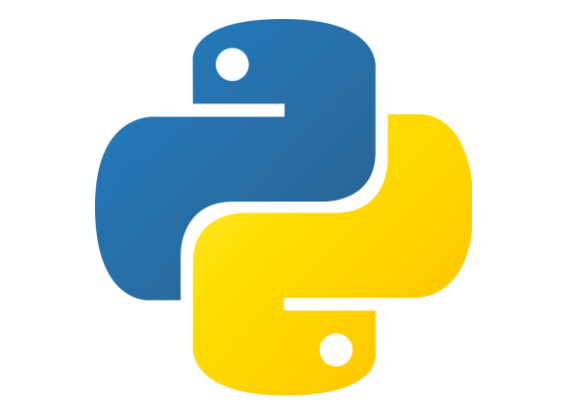Julia or Python?
Python has been around since the 1990s, and now it’s one of the most popular programming languages in the world. The reason why Python became so popular is that it offered simplicity and enabled programmers to read their code easily. This language is also relatively easy to learn so there’s no surprise that there are over 7 million Python coders in the world. Python is used by both small startups and such well-known companies like Netflix, Spotify, Google, and Instagram. It’s also quite popular in data science and machine learning. However, the world of programming evolves quickly, and programmers always want more. More efficiency, more areas of application, more flexibility, etc. This is exactly what motivated the creators of Julia, another programming language that was introduced in 2012. According to the developers, their goal was to create a language that would be as usable as Python, have the same computational capabilities as Matlab, and be as fast as C and C++.
As a result, Julia became a language of choice for many programmers, and yet many people cannot decide whether they should learn Julia or Python. This is not an easy choice, and even developers who use Julia claim that Python would be their first choice if they didn’t use Julia. Both these languages have certain advantages and disadvantages, so we decided to address all the differences between these languages to help you answer the Julia vs Python question.
What Julia Is?
Julia is a programming language created specifically for data science, complex linear algebra, data mining, 
 and machine le
and machine le arning. Creators of this language wanted to address the downsides of Python and other programming languages, offering a more convenient tool. Is Julia better than Python? Well, it certainly has some great features, which make people choose Julia for data science. Julia features an interactive command-line called REPL (Read Eval Print Loop) to help coders easily add quick commands and scripts. It offers a faster runtime performance. Why is Julia so fast? It uses the LLVM framework for just-in-time compilation (JIT). Thanks to this approach, Julia can offer the same speed as C. Just like Python, Julia has a straightforward yet powerful syntax. Julia can work directly with various external libraries. For example, you can use the PyCall library to interface with code written in Python, and even exchange data between Julia and Python. Julia enables you to specify types for variables, and it also enables you to build hierarchies of types so that general cases can handle specific types of variables. “For example, you can create a function that will accept integers with no need to specify their signing or length,” explains Brenda Wilkins, a software developer at a writing services review website Pick The Writer. Julia’s debugging suite can execute code in a local REPL so you can check variables, results, and add breakpoints. Programs written in Julia can generate other Julia apps and change their own code.
arning. Creators of this language wanted to address the downsides of Python and other programming languages, offering a more convenient tool. Is Julia better than Python? Well, it certainly has some great features, which make people choose Julia for data science. Julia features an interactive command-line called REPL (Read Eval Print Loop) to help coders easily add quick commands and scripts. It offers a faster runtime performance. Why is Julia so fast? It uses the LLVM framework for just-in-time compilation (JIT). Thanks to this approach, Julia can offer the same speed as C. Just like Python, Julia has a straightforward yet powerful syntax. Julia can work directly with various external libraries. For example, you can use the PyCall library to interface with code written in Python, and even exchange data between Julia and Python. Julia enables you to specify types for variables, and it also enables you to build hierarchies of types so that general cases can handle specific types of variables. “For example, you can create a function that will accept integers with no need to specify their signing or length,” explains Brenda Wilkins, a software developer at a writing services review website Pick The Writer. Julia’s debugging suite can execute code in a local REPL so you can check variables, results, and add breakpoints. Programs written in Julia can generate other Julia apps and change their own code.
Now that we’ve considered the main features of this language, let’s think of what makes it a better choice for data scientists compared to Python and try to find the answer for Python vs Julia.
Advantages of Julia
1. The syntax is optimized for math
Julia was intended for the users of scientific languages and environments like R, Octave, Matlab, and Mathematica. As a result, this language’s syntax looks similar to formulas used by non-programmers, which makes this language easier to learn for mathematicians.
2. Speed
Type declarations and JIT compilation enable Julia to beat unoptimized Python when it comes to speed. Of course, you can make Python faster by using third-party compilers and external libraries, but Julia was already designed to be faster
3. Automatic memory management
Just like Python, Julia enables users not to worry about allocating and freeing memory. It also gives manual control over the garbage so you won’t lose these features when switching to Julia from Python.
4. Julia was designed for machine learning and linear algebra
Julia was created for machine learning and statistics. As a result, Julia is a better fit for linear algebra. “Python wasn’t meant to support equations and matrices used in machine learning. Of course, Python can be optimized for such tasks, but Julia is already optimized for them out of the box,” explains Jordan Arnold, a software developer at a writing services review website Writing Judge. Here’s what a dot-product equation will look like when written in Python, R, and Julia:
5. Native machine learning libraries
Machine learning experts can appreciate the fact that Julia develops its own machine learning libraries. For instance, Flux is a library with many model patterns for common tasks. It’s written in Julia so you can modify it, using Julia’s JIT compilation to optimize your projects.
Advantages of Python
 Nevertheless, Python also offers some great benefits for data scientists. Even though this language wasn’t created for data science, it quickly evolved. Let’s have a look at the advantages of Python Language to try and solve the Python vs Julia debate.
Nevertheless, Python also offers some great benefits for data scientists. Even though this language wasn’t created for data science, it quickly evolved. Let’s have a look at the advantages of Python Language to try and solve the Python vs Julia debate.
1. Less startup overhead : Although Python might work slower than Julia, its runtime is less heavy so it usually takes less time for Python programs to start to work, providing some first results. Julia’s JIT compilation also decreases the startup speed. Although developers work on this issue, Python still starts faster.
2. Zero-based array indexing :In many languages, including C and Python, the first elements of arrays are accessed with a zero. For example, in Python, the first character in a string is a string[0]. When using Julia, you need to deal with 1-indexing, because this approach is often used by various science applications, and Julia was intended for a similar audience. Fortunately, there is an experimental feature that enables zero-indexing support, but the default indexing can be inconvenient for people with a programming background.
3. Python is more popular
Julia has an enthusiastic community that constantly grows, but it’s still far from the Python community in terms of the size.
4. More third-party packages
One of the main benefits of Python is the variety of third-party packages. There’s not much software built around Julia. Libraries like Knet and Flux make Julia a good choice for machine learning, but PyTorch and TensorFlow are mostly in use for various tasks.
5. Python is getting faster
First, Python’s interpreter improved, including improvements in parallel and multi-core processing. It becomes easier to make Python faster. For instance, the mypyc project translates Python into native C, which is much more convenient than Cython. This approach provides four times better performance, or even more impressive results when dealing with pure math tasks.
final words: Julia was created specifically for scientific calculations and machine learning, which is a reason why it’s so popular among professionals from these areas. Julia outperforms Python in terms of speed, while also being convenient and easy to use. Nevertheless, Python remains a great programming language with certain advantages. It has a thriving community and offers a faster startup speed. If you want to learn data science or work in this area, you should analyze the benefits of both languages and think of what is especially important for you. This way, you’ll be able to answer the Python vs Julia dilemma. Both these languages are relatively easy to learn and have a lot in common so the right choice depends on your specific objectives and preferences.
